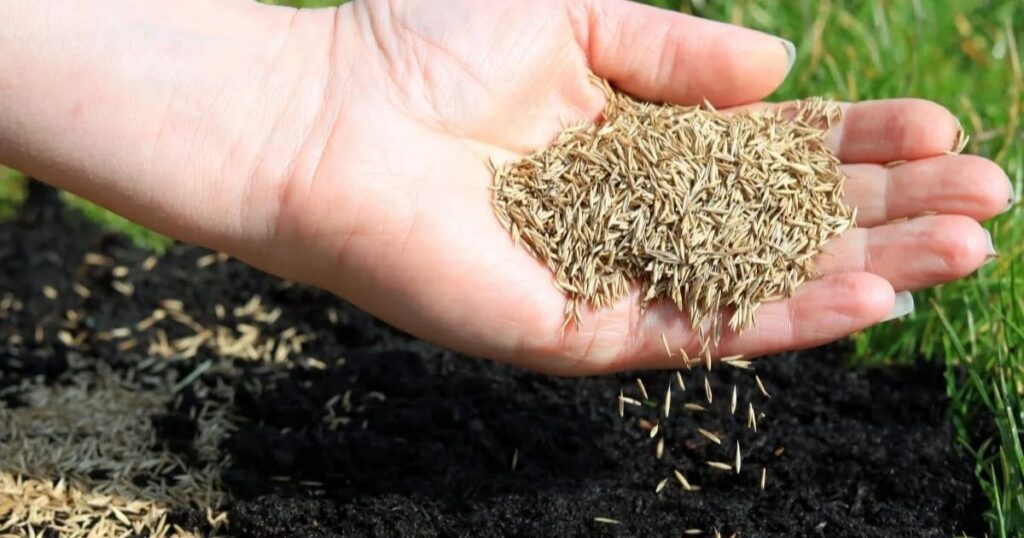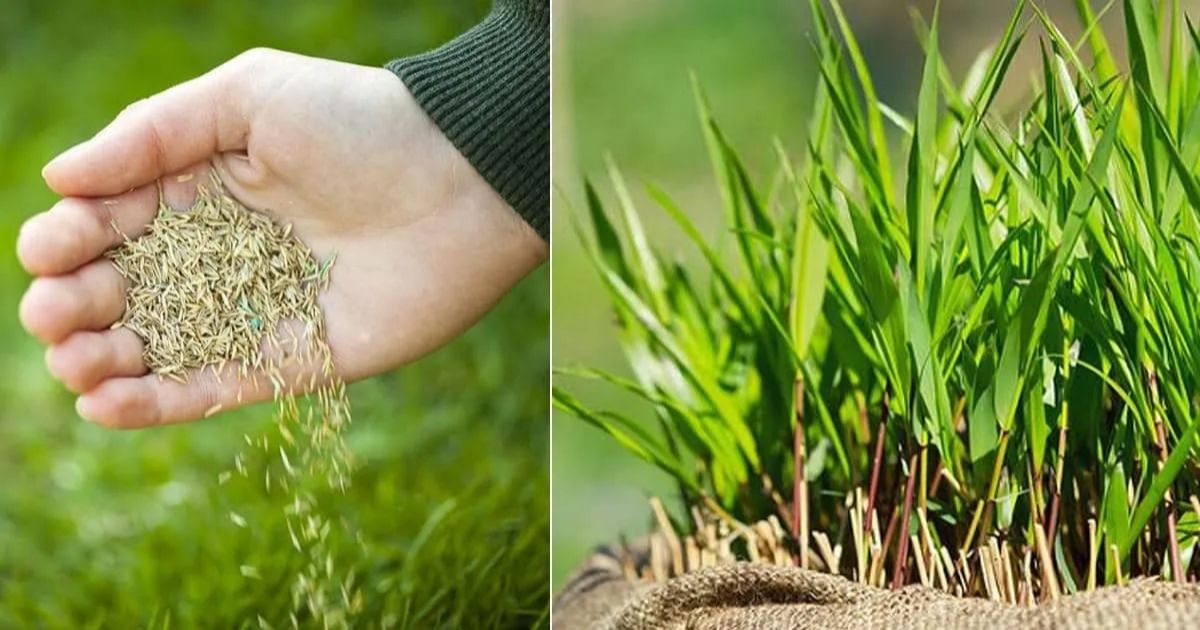Creating a lush, resilient lawn starts with choosing the right grass seed and following proper planting techniques. Tall fescue, a popular cool-season grass, is known for its durability and adaptability to various climates. This comprehensive guide will walk you through the essential steps of planting tall fescue grass seed, from selecting the best varieties to post-planting care. By following these expert tips, you’ll be well on your way to establishing a beautiful, high-performance lawn that will thrive for years to come.
Seed Selection
The foundation of a successful tall fescue lawn begins with choosing the right seed. Turf-type tall fescues have revolutionized the lawn care industry, offering homeowners a low-maintenance option that doesn’t compromise on appearance or performance. When selecting your tall fescue seed, consider the following factors:
Quality Matters
Opt for high-quality, certified seeds from reputable brands. The Rebels® Brand Tall Fescue Blend is an excellent choice, offering premium turf-type tall fescue varieties that have been rigorously tested for performance and reliability.
Extended Root Seed Varieties
For enhanced resilience and drought tolerance, consider extended root seed varieties. The Rebels® Brand Extended Root Seed Varieties are engineered to develop up to 40% more roots at deeper depths compared to ordinary grasses. This improved root system enables your lawn to better withstand stress factors such as heat, drought, and heavy foot traffic.
Shade Tolerance
If your lawn includes areas with limited sunlight, look for shade-tolerant seed mixes. The Rebels® Brand Shade Mix combines shade-tolerant turf-type tall fescues with fine fescues, which are known for their exceptional performance in low-light conditions.
Also read this post:we’ll explore how to identify fire ants.
Regional Adaptations
For warmer climates, choose varieties specifically bred for heat and drought tolerance. The Rebels® Brand Southern Classic Blend and Southern Classic Shade Mix are excellent options for Southern lawns, offering superior performance in challenging conditions.
By carefully selecting the right tall fescue seed varieties, you’re setting the stage for a lawn that will thrive in your specific environment and meet your unique needs.
Optimal Timing

Timing is crucial when it comes to planting tall fescue grass seeds. As a cool-season grass, tall fescue has specific growth patterns that should guide your planting schedule:
Fall Planting
The ideal time to plant tall fescue is during late summer to early fall. This period offers several advantages:
- Cooler temperatures promote vigorous growth
- Warm soil encourages rapid germination
- Reduced weed competition
- Natural rainfall often provides adequate moisture
Aim to plant when soil temperatures are between 60 to 65 degrees Fahrenheit. This typically occurs 6-8 weeks before the first expected frost in your area.
Spring Planting
If fall planting isn’t possible, early spring is the second-best option. Wait until soil temperatures warm up to the 60-65°F range, usually a few weeks after the last frost date. Spring planting can be successful but be prepared to provide extra care and watering as the weather warms up.
Avoid Summer Planting
Planting tall fescue during the heat of summer is not recommended. High temperatures and drought stress can hinder germination and establishment, leading to poor results.
By aligning your planting schedule with tall fescue’s natural growth cycle, you’ll give your new lawn the best chance for successful establishment and long-term health.
Soil Testing

Before you begin planting, it’s essential to understand the composition and health of your soil. A comprehensive soil test provides valuable insights that will guide your soil preparation and ongoing lawn care practices:
Why Soil Testing Matters
- Reveals nutrient deficiencies or excesses
- Determines soil pH levels
- Identifies organic matter content
- Guides fertilizer and amendment choices
How to Conduct a Soil Test
- Collect soil samples from various areas of your lawn
- Mix samples thoroughly
- Send to a reputable soil testing laboratory
- Await detailed analysis and recommendations
Interpreting Results
Tall fescue thrives in soil with a pH between 5.5 and 7.5. Your soil test results will indicate if pH adjustments are necessary:
- For acidic soil (pH below 5.5), add lime to raise the pH
- For alkaline soil (pH above 7.5), add sulfur to lower pH
The test will also provide recommendations for fertilizers and soil amendments to optimize nutrient availability for your new tall fescue lawn.
Soil Improvement
Based on your soil test results, you may need to incorporate organic matter or other amendments to improve soil structure and fertility. Work these materials into the top 6-8 inches of soil before planting to ensure they’re readily available to your grass’s developing root system.
By taking the time to understand and improve your soil conditions, you’re creating an optimal environment for your tall fescue seed to germinate and establish a strong, healthy lawn.
Site Preparation
Proper site preparation is crucial for the success of your tall fescue lawn. This step ensures that your seed has the best possible environment for germination and establishment:
Clearing the Area
- Remove existing vegetation, including weeds and old grass
- For large areas, consider using a sod cutter
- Apply a non-selective herbicide if necessary, following label instructions and observing waiting periods before seeding
Grading and Leveling
- Use a rake to create a flat, even surface
- Fill in low spots to prevent water accumulation
- Ensure proper drainage by creating a gentle slope away from buildings (about 1 foot drop per 50 feet)
- Address steep grades to prevent erosion and mowing difficulties
Soil Preparation
- Loosen the top 6-8 inches of soil using a tiller or garden fork
- Remove rocks, roots, and debris
- Incorporate soil amendments and starter fertilizer as recommended by your soil test
- Rake the area smooth, creating a fine, firm seedbed
Tackling Pest Issues
If you live in an area prone to pests like fire ants, address these issues before planting. Apply appropriate pest control products following manufacturer instructions.
By thoroughly preparing your site, you’re creating an ideal environment for your tall fescue seed to thrive, setting the stage for a beautiful, healthy lawn.
Seed Planting

With your site prepared and your high-quality tall fescue seed in hand, it’s time to plant. Follow these steps to ensure proper seed distribution and optimal germination:
Calculating Seed Rates
- Measure your planting area accurately, subtracting space occupied by buildings, driveways, etc.
- Refer to the seed package for recommended seeding rates
- For new lawns, typically use 6-8 pounds of seed per 1,000 square feet
- For overseeding existing lawns, use about half that amount
Choosing the Right Spreader
- For small areas (under 5,000 square feet), use a drop spreader for precise application
- For larger areas, a broadcast or rotary spreader works well
- Calibrate your spreader according to the manufacturer’s instructions and your calculated seed rate
Spreading the Seed
- Divide your seed into two equal portions
- Spread the first half walking in one direction (e.g., north to south)
- Spread the second half walking perpendicular to the first direction (e.g., east to west)
- This cross-hatching technique ensures even coverage
Raking and Rolling
- Lightly rake the seeded area to cover the seed with about 1/4 inch of soil
- Use a lawn roller to ensure good seed-to-soil contact
- A roller filled 1/3 with water provides the right amount of pressure without over-compacting the soil
By following these seed planting techniques, you’re giving your tall fescue seed the best possible start for successful germination and establishment.
Post-Planting Care
The care you provide in the weeks following planting is critical to the success of your new tall fescue lawn. Follow these guidelines to ensure optimal growth and establishment:
Watering Techniques
- Keep the top inch of soil consistently moist until germination (7-21 days)
- Water lightly and frequently, often multiple times per day in hot or windy conditions
- As seedlings establish, gradually increase watering depth and reduce frequency
- Once established, water deeply and less frequently to encourage deep-root growth
Mowing Recommendations
- Allow new grass to reach about 4.5 inches before the first mow
- Set mower blades high, removing only 1/3 of the grass blade length
- Maintain a height of 3-4 inches for established tall fescue lawns
- Use sharp mower blades to prevent tearing the grass
Fertilization
- Apply a starter fertilizer at planting time, following soil test recommendations
- Wait until you’ve mowed the new lawn at least three times before applying additional fertilizer
- Follow a regular fertilization schedule based on your soil test results and local recommendations
Weed Control
- Avoid using any weed control products until you’ve mowed the new lawn at least three times
- Hand-pull any weeds that appear during the establishment period
- Once established, use appropriate herbicides as needed, following label instructions carefully
Traffic Management
- Minimize foot traffic in newly seeded areas
- Keep children and pets off the new lawn until it’s well-established
- Wait until you’ve mowed the lawn several times before regular use
Long-term Maintenance
- Continue to monitor soil health with regular soil tests
- Adjust your care routine based on seasonal changes and lawn performance
- Consider overseeding annually to maintain lawn density and vigor
By providing attentive post-planting care, you’ll help your new tall fescue lawn develop into a lush, resilient, and beautiful landscape feature that you can enjoy for years to come.
In conclusion, planting tall fescue grass seed requires careful planning and execution, from selecting the right seed varieties to providing diligent post-planting care. By following these comprehensive guidelines and leveraging the benefits of high-performance turf-type tall fescues, you’re well on your way to creating a lawn that’s not only visually appealing but also resilient to various environmental stresses.
Remember that establishing a healthy tall fescue lawn is an investment in your property. The time and effort you put into proper planting and initial care will pay off with a beautiful, low-maintenance lawn that enhances your outdoor space and provides enjoyment for years to come. Whether you’re tackling a full lawn renovation or overseeding an existing area, these techniques will help ensure your tall fescue grass seed has the best possible chance for success.
FAQs
What is the best time to plant fescue grass seed?
The best time to plant fescue grass seed is in late summer to early fall, typically 6-8 weeks before the first expected frost. This timing allows the grass to establish strong roots before winter and take advantage of cool temperatures and natural rainfall, which promote optimal growth.
What is the best height to keep tall fescue?
The best height to maintain tall fescue is between 3 to 4 inches. Keeping tall fescue at this height encourages deep root growth and helps the grass better withstand drought and heat stress.
What is the best grass to mix with tall fescue?
Kentucky bluegrass is often considered the best grass to mix with tall fescue for cool-season lawns. This combination provides a balance of durability and fine texture, with the Kentucky bluegrass filling in any thin spots due to its spreading growth habit.
What is the difference between fine fescue and tall fescue?
Fine fescue has thinner blades and a more delicate texture compared to tall fescue, which has wider blades and a coarser appearance. While fine fescue is more shade-tolerant and requires less maintenance, tall fescue is generally more heat and drought-resistant, making it better suited for high-traffic areas and warmer climates.











